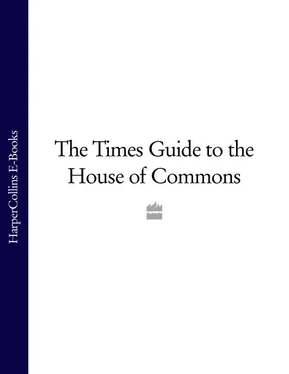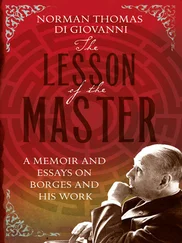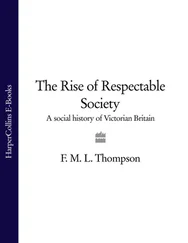The standard Labour analysis, throughout the Thatcher and Major years, had been that there was not a great deal wrong with the public services that a lot of money could not put right. To some extent, that was true. Teachers, nurses, doctors and police officers had all fallen behind in the pay scales, relative to their professional counterparts in the private sector. Schools and hospitals were in a dilapidated state and the system was rationing provision in the only way it could – by queues. It was obvious that extra money was going to be part of the answer. That it was not the whole answer became clear when the money started to pour. The Prime Minister, late in 2000, realised that the analysis he had inherited from opposition was wrong. He realised too that the provision of extra money was a necessary accompaniment to the difficult reforms that, it was now clear, were needed.
The second phase of Labour government was dominated, in the coverage at the time and by the accounts of it since, by foreign policy. The terrorist atrocity on September 11, 2001 confirmed in the mind of the Prime Minister something that he had defined in a speech in Chicago in 1999: that terrorist threats could no longer be contained within national borders and that, therefore, the definition of what was in Britain’s interest had to be hugely expanded. The attacks on Afghanistan and Iraq were the immediate consequences of the Chicago doctrine, applied to the terrorist attacks.
The last word will probably never be said on these decisions but it is not true that foreign policy meant that the Government’s domestic momentum was lost. On the contrary, it started to speed up. Changes to the healthcare system began in earnest. The internal market bequeathed by the Conservatives, which Frank Dobson had torn up, was remade. A tariff was introduced to apply to procedures to change the incentives in the system. Private companies were encouraged to offer their services and patients were given a choice of which hospital to go to.
In education, the gradual demise of what Alastair Campbell famously called the “bog-standard” comprehensive began. City Academies, free from local authority control and aided by bequests from philanthropists, made the schools system more diverse. Again, the ideas inherited from the Major Government, which had been vanquished in the first term, were revived. Much to the chagrin of the Labour Party, which contains more than its fair share of defenders of municipal accountability, a new model school was established: independent and not wholly funded by the State. The dispute between the Labour leadership and the Labour Party reached a head over the 2005 Act, which sought to establish a new cadre of independent state schools. After a bruising battle, a very much diluted Act passed into statute, to no great effect.
Over time, a model of public service reform had developed that came to define the Government at its most radical. Pressure on the provider of the service came from three sources: from the users who could choose to go elsewhere; from the central State, which set targets for performance and ensured that services were audited and inspected; and from the threat that any failing institution would be subject to losing its franchise in competition with a private company.
The practice always fell some way short of the theory, not least because few Labour MPs could be assembled to agree with it. A more comfortable phase began when Mr Blair left office and was replaced by Mr Brown. Although, ostensibly, there was no serious change of direction, the Government slowed everything down. The reforms in health were slowed almost to a standstill. Education policy was almost entirely derailed by a crisis in child protection with the aftermath of the dreadful case of Baby P, a boy battered to death at the hands of his mother, her boyfriend and their lodger despite repeated visits by social workers. Only in welfare did the radicalism of the second phase continue as James Purnell tried to add greater conditions to the receipt of benefits and tried to widen the range of suppliers of welfare.
In a sense, the third phase of the Government brought it full circle. The emphasis during the Brown years on a multitude of small initiatives driven by central targets, now rebranded as guarantees, and the evident reluctance of the Government to open up the health and education markets were reminiscent of the Government’s stuttering beginnings.
Of course, just as the Blair years will not be remembered for the travails of domestic policy, so the Brown years will be recalled as the moment that the banking system almost collapsed. The banking rescue, the small discretionary fiscal stimulus and the recession were events of great economic magnitude on which the Government chose, unsuccessfully as it turned out, to fight the general election.
By the time of that general election the ideas that had sustained the Labour Party through more than a decade of government were widely felt to have been emptied of content. And yet this was only a half truth. In the Conservative policy on free schools, for example, there were glimpses of where second-phase Labour was trying to get to. The social liberalism of the coalition Government owed something to Mr Cameron’s desire to change his party, something to Nick Clegg and the Liberal Democrats, but rather more to the example of the Labour governments.
Phil Collins is a former speechwriter for Tony Blair
‘This sucker’s going down’: diary of a financial crisis
Suzy Jagger
Politics & Business
Correspondent
For the man who told a reporter three years ago that he had no idea whether the US was heading into recession because he got a B in basic economics, President Bush showed astonishing prescience on the future of the world financial system. As Lehman Brothers collapsed in September 2008, almost dragging the global banking system down with it, the President declared: “This sucker’s going down.”
While Britain’s “sucker” of a financial sector started to go down before its American rival, it was a US fiscal malaise that triggered the fall. Throughout the summer of 2007 banks who had lent extensively to borrowers on low incomes with bad credit histories began to warn publicly that in many cases they would not get their money back. HSBC, the owner of a US lender called Household International, startled the City and Wall Street in May of that year when it wrote off $5 billion of bad US debts. As the summer dragged on, more banks admitted that mortgage borrowers were defaulting on their repayments and that they would have to write the bad debts off. Banks started to become wary about lending to each other and by the end of the summer the wholesale lending market, where banks lend billions to each other for short periods, had dried up.
It was the crisis in this market that triggered the collapse of Northern Rock, sparking the first run on a British bank for more than a century. Its business model, devised by Adam Applegarth, its chief executive, had two main consequences. By choosing the wholesale lending market to fund Northern Rock’s mortgage book, rather than backing it with savers’ deposits, the former mutual was able to grow its business quickly and become Britain’s fifth biggest provider of home loans. It also meant that when the wholesale lending market ground to a halt, Northern Rock was the most heavily exposed.
The public began to develop a new financial vocabulary. The word “liquidity” crept into headlines, television news alerts and ordinary conversations. It seemed, almost overnight, that everyone had become familiar with the term “sub-prime loan”, even if they were not entirely sure what it meant. (It means a loan to a low-income borrower with a poor credit score.)
Читать дальше












